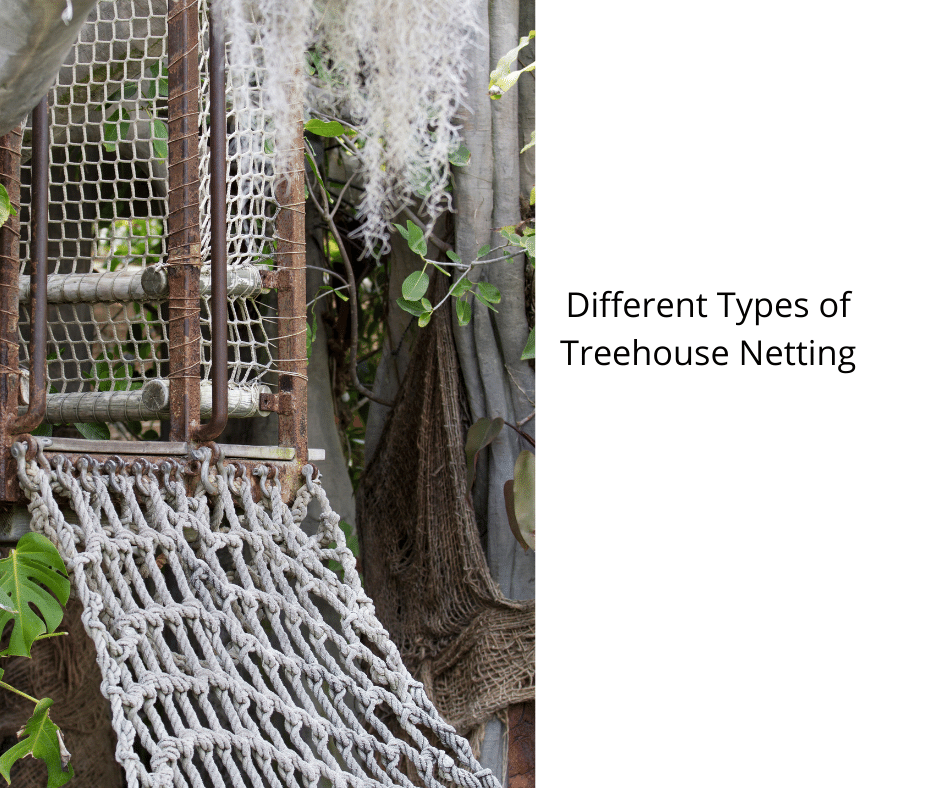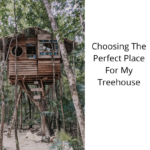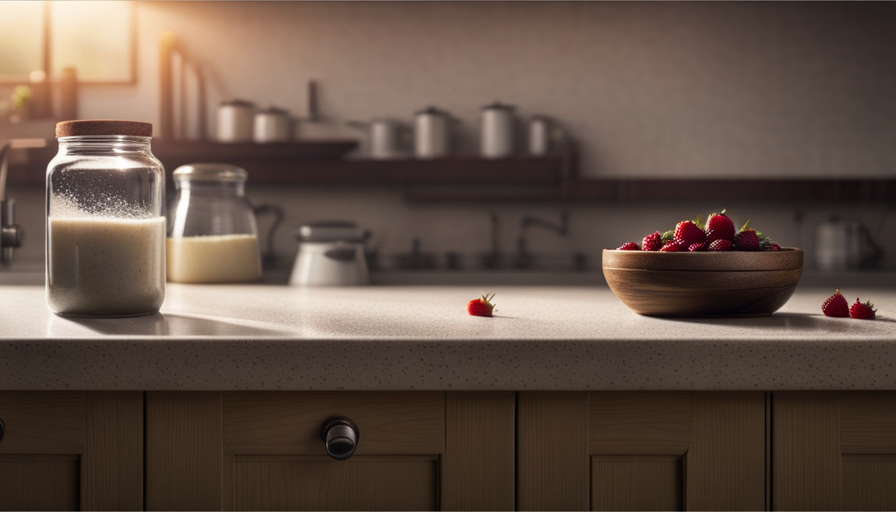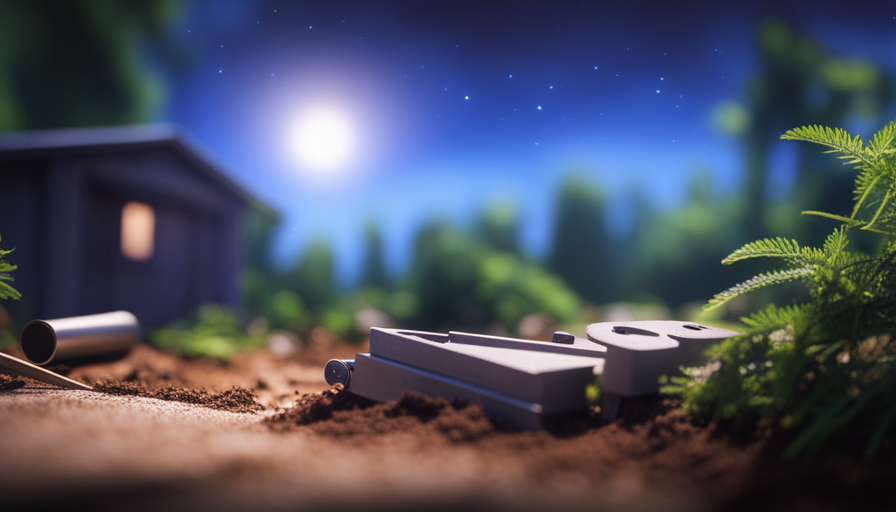Beginners Guides
Costs of Building a Custom Treehouse
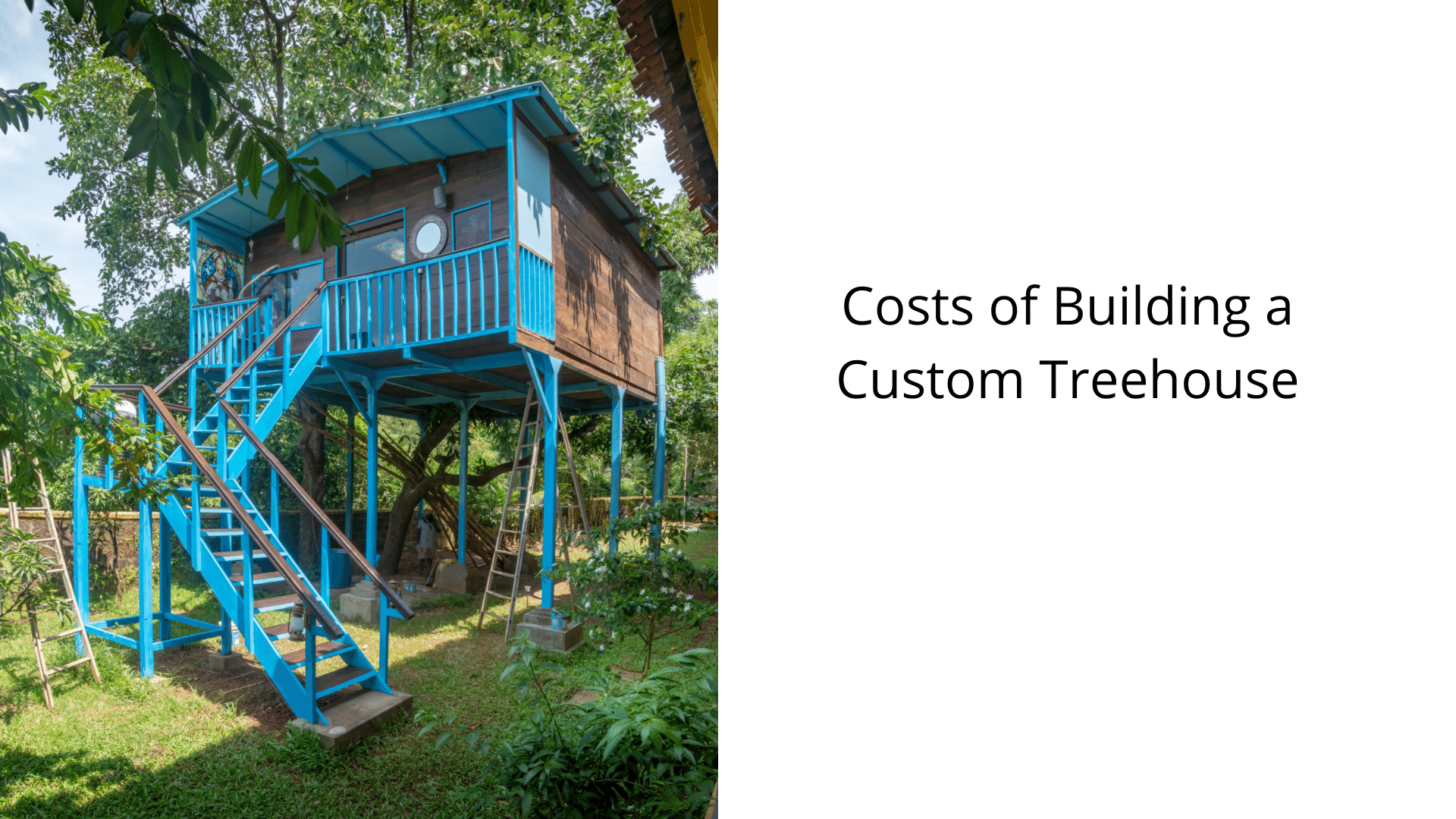
One of the greatest advantages of having a bespoke treehouse is its flexibility in design. You have the freedom to select a design that perfectly matches your home, offering an improved view compared to your initial one. Sarah, a writer with a background in the lawn care sector, enjoys gardening and chicken rearing. In her free time, she prefers to cut her grass using a battery-operated lawn mower.
Costs of building a custom treehouse
Many factors determine the costs of building a custom treehouse. For instance, if you want to build a large treehouse with multiple levels, you will need to find two or more trees. Then, you will need to purchase hardware for the platforms and a safety system. You will also need to add decking or walkways to connect the different areas. Depending on the design and size, you may end up spending more than you initially thought.
The cost of labor for a custom treehouse will vary greatly, depending on the size and style of the building. On average, you will spend $25,000 to $35,000 for a custom build. However, this doesn’t include the cost of removing neighboring trees, which can range from $400 to $2,000. Despite the high materials costs, a custom treehouse will increase the value of your home by $7,130.
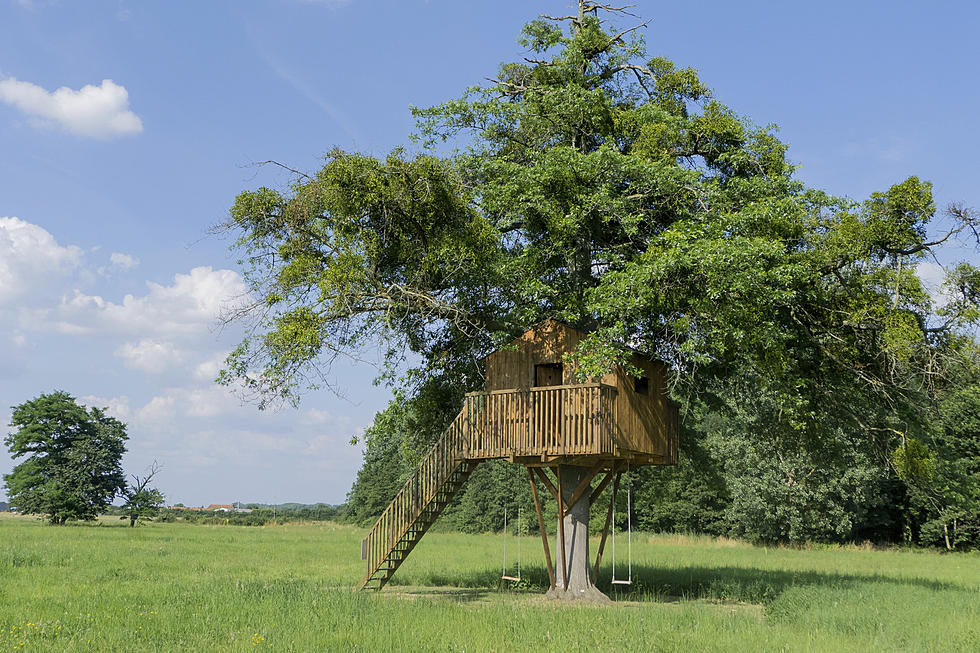
If you want to build a custom treehouse yourself, you can design it yourself using a design program or hire a tree house company. Treehouse companies typically have very low overhead. Some of them have a storefront, but these costs can be built into the project’s overall price. Another cost to consider is travel costs. Hiring a tree house company from outside your area will require travel expenses.
Another cost involved in building a custom treehouse is a tree service. While most people can do it themselves, if you have the budget, it’s worth hiring a tree service company. Professional tree services can range from $1,500 to $10,000. You’ll also need to consider the size of the structure. Using a formula to calculate the diameter of the tree’s trunk will help you choose the right size for the structure.
Costs of Hiring a Contractor
Hiring a contractor to build a custom treehouse can be expensive. Costs can vary from a few hundred to several thousand dollars. A site visit, detailed drawings, and full construction can range in price. The costs for these services vary between treehouse construction companies. Prices may be lower for a simple design or higher if you want to include a deck or walkways.
When hiring a contractor to build your custom treehouse, it is important to check credentials and check references. A licensed residential carpenter is the best choice for a job like this. Make sure the contractor has experience in building treehouses. You should ask for examples of their previous work and ask to see a portfolio. Get several quotes and hire the one who offers the best value. Ask about the permitting process and ensure you have a copy of your agreement.
When hiring a custom tree house contractor, it is essential to consider their overhead. These companies generally have low overhead and may even have their own storefront. However, there are certain ongoing expenses that you should be aware of, such as marketing costs. In addition to overhead, many companies also hire employees to help them increase their knowledge base. You should be aware of these expenses, as they can be built into the overall cost of the project.
The cost of hiring a contractor for a custom-designed treehouse will depend on the complexity of the structure, the size, and other factors. Generally, a kids’ treehouse will be between six and ten feet off the ground. Higher-level structures, however, will require specialized tools and extra time. This can be very expensive, though. A custom-built treehouse can cost anywhere from twenty-five thousand to three hundred thousand dollars.
Costs of Materials
There are two main types of costs for building a custom treehouse. One is the initial cost of the design, while the other is the ongoing cost of materials. The first type of custom treehouse cost is the most expensive. It costs anywhere from $1,500 to $5,000 for a simple design, and can go up to $10,000 for an elaborate one. Both types have similar components, but the cost of a custom treehouse depends on the quality of the materials used and the location of the building.
You can save money on material costs by using prefabricated designs, but you should also consider the location of your tree. The higher the place, the more expensive the treehouse will be. Several trees are suitable for building a custom treehouse, including Oak Redwood, Beech Fir, and Hickory Maple. If you are unsure of which tree to choose, speak to an arborist. The tree you choose should be large enough to support the weight of the treehouse, have a minimum girth, and have a long life expectancy.
The size of your custom treehouse will also determine the cost of the materials. Treehouses vary in size, from simple decks to elaborate multi-story buildings. The size of the custom treehouse will determine the cost of materials, but the more complicated the design, the more money it will cost. In addition, the cost of materials will increase if you choose more expensive lumber or composite wood. It will also be more expensive if you want your custom treehouse to be fully finished, which increases the total cost.
After deciding on the style and materials of your custom treehouse, you must determine what budget you have to allocate for the project. If you are building a custom treehouse, you may want to check online for tips and guides to save money on materials. The cost of materials for a custom treehouse can range from $2,000 to over $10,000. However, you can find some great discount materials by shopping around and finding the best deals. In addition, if you want to save even more money, you can buy reusable materials like sandpaper and nails.
Cost of permits
Building permits are required for custom treehouses, and the cost of these permits depends on the jurisdiction. Treehouse permits vary in cost but are not usually a large percentage of the overall project cost. Permit fees may include arborist consultation, geotechnical report, and additional renderings. A treehouse designed by a professional usually involves higher costs. In addition to permits, the cost of a custom treehouse might include other fees, such as a geotechnical report and building permit.
If you want to build a large, complex treehouse with amenities, you may need a building permit. Depending on your state, these permits cost anywhere from $1,200 to $2,000. Trees may also need to be cut down if your treehouse is situated in a designated area. Depending on the type of tree and its size, building permits can be as low as $200. Permits for a large custom treehouse can be expensive, but they are necessary.
The cost of a custom treehouse depends on the complexity and size of the structure. Prefab treehouse kits cost $400 to $1,600, and custom builds can cost $25,000. You’ll also need to pay for permits if you choose to build your treehouse. The permits can add up to another $2,000 or more to the total cost. Custom treehouses are legal on private property but must meet local code requirements.
In addition to the cost of building permits, other expenses associated with a custom treehouse should be considered. Different permits require different levels of amenities, and they cost different amounts. Custom treehouse permits are an essential consideration for any business wishing to build custom treehouses. The costs of these permits will also depend on the location and type of trees. You should ask your local building department about the cost of building permits in your area.
Cost of Insurance
While general liability insurance is important for any business, custom treehouse businesses should also carry other types of insurance to protect themselves in case of a loss or accident. Commercial property insurance protects the buildings and equipment of the business from losses and damages. Home insurance can cover medical bills and other expenses if someone gets hurt in a treehouse accident. However, this coverage doesn’t apply to the residents. For these reasons, it’s important to purchase insurance for the entire custom treehouse company.
Because a treehouse can be a unique addition to your property, it is important to talk to your homeowner’s insurance provider before beginning construction. Failure to notify your insurer before building your custom treehouse may cause your policy to lapse. A treehouse is a valuable structure, so you must buy adequate coverage to avoid financial ruin. It is important to keep in mind that homeowners insurance may be void if the treehouse is not compliant with local laws.
Another expense to consider when choosing an insurer is the cost of your treehouse’s installation. A treehouse needs to be safely installed for it to stand without falling. Before building a custom treehouse, you need to have an arborist or engineering professional review the structure. These professionals may charge up to a thousand dollars for code preparation. In addition, the cost of living in your local area can increase the costs of constructing a custom treehouse. Alternatively, you could opt to hire a company outside of your town to do the job.
Homeowners’ insurance for custom treehouses is a worthwhile investment. This coverage can minimize your liability risks while allowing you to choose the perfect treehouse. In addition, you can save money by purchasing quality materials and avoiding costly mistakes. And while a custom treehouse can add great fun and value to your home, it can also be a liability-prone endeavor. Consider these tips when choosing a custom treehouse contractor and make your custom treehouse as safe as possible.
I’m Theodore, and I love tiny houses. In fact, I’m the author of Tiny House 43, a book about tiny houses that are also tree houses. I think they’re magical places where imaginations can run wild and adventures are just waiting to happen.
While tree houses are often associated with childhood, they can be the perfect adult retreat. They offer a cozy space to relax and unwind, surrounded by nature. And since they’re typically built on stilts or raised platforms, they offer stunning views that traditional homes simply can’t match.
If you’re looking for a unique and romantic getaway, a tree house tiny house might just be the perfect option.
Beginners Guides
What Do You Need To Build A Tiny House
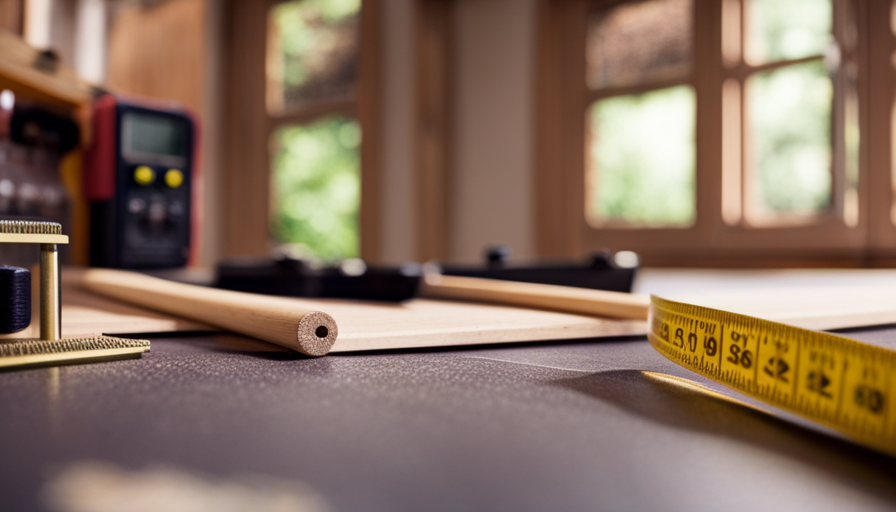
Are you prepared to undertake an exhilarating adventure to construct your own tiny home? Erecting a tiny home is a significant undertaking, demanding thorough preparation, keen attention to detail, and a zeal for creative design. However, before we dive into the intricacies of this captivating project, let’s take a moment to envisage what could be.
Picture yourself in a cozy, compact space that reflects your unique style and caters to your specific needs. A place where every square inch is optimized for functionality and comfort. Now, imagine the sense of accomplishment and freedom that comes with owning a home that you built with your own two hands.
In this article, I will guide you through the essential steps required to bring your tiny house dreams to life. So, let’s get started on this captivating journey of building a tiny house that will not only meet your expectations but exceed them.
Key Takeaways
- Building a tiny house requires careful planning, attention to detail, and a passion for innovative design.
- The first step is to determine budget and space requirements.
- Selecting a suitable location involves considering zoning regulations and access to utilities.
- Designing and planning the tiny house layout should include multifunctional furniture, open floor plans, and optimized storage solutions.
Determine Your Budget and Space Requirements
To determine your budget and space requirements, you’ll need to crunch the numbers and envision the perfect balance between cozy and functional.
Start by determining your budget and space requirements, as these two factors will guide all other decisions in the building process. Consider how much you’re willing to spend and how much space you need to comfortably live in.
Once you have determined your budget and space requirements, the next step is to select a suitable location for your tiny house. Consider factors such as accessibility, proximity to amenities, and zoning regulations. Obtain the necessary permits and permissions to ensure that you’re legally allowed to build your tiny house in your chosen location.
After selecting a suitable location, it’s time to design and plan your tiny house layout. Take into account your specific needs and preferences, and consider incorporating space-saving features such as multipurpose furniture and built-in storage.
With your design in hand, it’s time to select the right materials and tools for your project. Opt for durable and sustainable materials that’ll withstand the test of time. Building a solid foundation is crucial for the stability and longevity of your tiny house.
Next, construct the frame and walls of your tiny house. Pay attention to details such as insulation and weatherproofing to ensure that your tiny house is comfortable and energy-efficient.
Once the structure is complete, it’s time to install plumbing and electrical systems. Hiring professionals for this step is highly recommended to ensure safety and compliance with building codes.
Creating a functional and space-saving interior design is the next step. Consider utilizing vertical space and incorporating clever storage solutions.
Add the finishing touches and personalize your tiny house to make it feel like home.
Transitioning into the subsequent section about choosing a suitable location, it’s important to carefully consider all the factors and make an informed decision that aligns with your budget and space requirements.
Choose a Suitable Location
Finding a suitable location for your tiny house involves considering factors like zoning regulations and access to utilities. Where will your tiny house be able to legally and comfortably exist? Here are three key considerations when finding the perfect spot:
-
Zoning Regulations: It’s crucial to research and understand the zoning regulations in your desired location. Some areas have specific requirements for tiny houses, such as minimum square footage or designated zones. Ensure that your chosen location allows for the construction and habitation of tiny houses. Failure to comply with zoning regulations can lead to fines or even the removal of your tiny house.
-
Access to Utilities: Before settling on a location, make sure it has access to essential utilities such as water, electricity, and sewage. Consider the cost and feasibility of connecting your tiny house to these utilities. Some areas may require you to install a septic system or use composting toilets. Lack of access to utilities can severely impact the livability of your tiny house.
-
Legal Considerations: Apart from zoning regulations, there may be additional legal considerations to keep in mind. These can include building codes, permits, and homeowner association rules. Research the specific requirements and restrictions that apply to your chosen location to avoid any legal complications.
In the next section, we’ll discuss how to obtain the necessary permits and permissions for building your tiny house.
Obtain the Necessary Permits and Permissions
When it comes to obtaining the necessary permits and permissions for your tiny house, it’s important to familiarize yourself with the local regulations and engage with the appropriate authorities.
The first step in this process is to obtain permits for your tiny house construction. These permits ensure that your structure meets safety standards and is compliant with building codes. You will need to submit detailed plans and specifications to the building department, outlining the dimensions, materials, and design of your tiny house.
Additionally, you may need to obtain permits for utilities such as electricity, water, and sewage connections.
Once you have obtained the necessary permits, the next step is to find suitable land for your tiny house. Depending on your location, you may need to consider zoning regulations, land use restrictions, and setback requirements. It’s essential to research and identify areas where tiny houses are permitted and find land that meets your needs and budget.
Designing and planning your tiny house layout is the next crucial step in the process. This involves determining the size and layout of your living space, as well as the placement of utilities, storage areas, and essential facilities. By carefully considering these factors and incorporating them into your design, you can create a functional and efficient tiny house that meets your needs.
Now, let’s move on to the next section and explore how to design and plan your tiny house layout.
Design and Plan Your Tiny House Layout
Now, let’s delve into the exciting process of crafting the perfect layout for your cozy little haven. When designing your tiny house layout, there are a few essential tips to consider in order to maximize the space effectively.
-
Utilize multifunctional furniture: Opt for pieces that serve multiple purposes, such as a sofa that can transform into a bed or a dining table that doubles as a workspace. This will help you make the most of limited square footage.
-
Embrace vertical space: Take advantage of the height in your tiny house by incorporating tall storage units and installing shelves or hooks on the walls. This will free up valuable floor space and create a sense of openness.
-
Create an open floor plan: By avoiding unnecessary walls and partitions, you can create a seamless flow between different areas of your tiny house. This will not only make it feel more spacious but also allow for natural light to spread throughout the space.
-
Optimize storage solutions: Look for innovative storage options like under-bed drawers, built-in cabinets, and overhead compartments. These clever storage solutions will help you keep your tiny house clutter-free and organized.
By implementing these tiny house layout tips and maximizing every inch of your space, you can create a functional and comfortable living environment.
In the next section, we’ll discuss how to select the right materials and tools for your tiny house construction.
Select the Right Materials and Tools
To create a functional and comfortable living environment in your cozy haven, it’s important to select the right materials and tools for your tiny house construction. When choosing materials, opt for those that are sustainable and environmentally friendly. This not only reduces the ecological impact of your tiny house but also ensures its longevity. Some popular sustainable materials include reclaimed wood, bamboo, and recycled steel. These materials not only have a lower carbon footprint but also provide durability and aesthetic appeal to your tiny house.
In addition to selecting sustainable materials, having the right tools is crucial for a successful construction project. Here are some essential tools for building a tiny house:
| Tools | Purpose |
|---|---|
| Circular saw | Cutting lumber and plywood |
| Power drill | Drilling holes and driving screws |
| Measuring tape | Taking accurate measurements |
| Level | Ensuring everything is straight and level |
| Hammer | Driving nails and fastening materials |
| Screwdriver set | Tightening screws and assembling components |
By selecting sustainable materials and having the necessary tools, you are setting the foundation for a well-built tiny house. The next step is to build a solid foundation for your cozy abode.
Build a Solid Foundation
Using sustainable materials and essential tools is just the beginning; now it’s time to create a strong and sturdy foundation for your cozy haven. Building a tiny house requires careful consideration of building techniques and choosing the right materials.
The foundation is crucial as it supports the entire structure and ensures its longevity. One of the most common methods for building a tiny house foundation is using concrete piers or blocks. These provide a stable base for the structure and can be adjusted to level the floor.
Another option is a skid foundation, where pressure-treated beams are laid directly on the ground and the house is built on top. This method allows for easy relocation of the tiny house if needed.
When constructing the foundation, it is important to follow local building codes and regulations. This ensures that the foundation meets safety standards and can withstand the elements. Additionally, using pressure-treated or rot-resistant lumber for the beams and joists will help prevent decay and extend the lifespan of the foundation.
With a solid foundation in place, you can move on to constructing the frame and walls, which will give shape to your tiny house and provide support for the roof.
Construct the Frame and Walls
Once the foundation is complete, it’s time to roll up your sleeves and start hammering away at constructing the frame and walls, giving your cozy haven its shape and support like the backbone of a house. Building a tiny house requires careful planning and precise execution. Here are the building techniques and insulation options to consider:
-
Framing Techniques: Choose between traditional stick framing or the more space-efficient option of using steel studs. Stick framing involves assembling the frame using wooden studs, plates, and headers. Steel studs, on the other hand, provide strength and durability while occupying less space.
-
Wall Insulation Options: Insulating your tiny house is crucial for energy efficiency and comfort. Consider using fiberglass batts, spray foam insulation, or rigid foam boards. Fiberglass batts are cost-effective but may require professional installation. Spray foam insulation provides excellent insulation and seals gaps effectively. Rigid foam boards offer high insulating value and are easy to install.
-
Roof and Floor Framing: Ensure your roof and floor framing are sturdy and capable of handling the weight. Choose between traditional rafters or trusses for the roof, and consider using joists or steel beams for the floor.
Constructing the frame and walls is a critical stage in building a tiny house. Once complete, it’s time to move on to the next step of installing plumbing and electrical systems, ensuring your tiny home is functional and ready for habitation.
Install Plumbing and Electrical Systems
Now that you’ve constructed the frame and walls, it’s time to bring your tiny haven to life by installing the essential plumbing and electrical systems. This is a crucial step in creating a fully functional and comfortable living space.
To begin, you’ll need to plan the layout of your plumbing system. This includes determining the placement of pipes for the sink, shower, toilet, and any other fixtures you may have. It’s important to ensure that the plumbing is properly vented and connected to a reliable water supply. Once the layout is finalized, you can proceed with installing the pipes, valves, and fittings.
Next, it’s time to focus on the electrical system. This involves running wires throughout the tiny house to provide power to outlets, light fixtures, and appliances. It’s crucial to adhere to safety standards and regulations during this process. You’ll need to install a main electrical panel and distribute the wiring accordingly, ensuring that each circuit is properly grounded and protected.
Don’t forget about insulation. Proper insulation is essential for maintaining a comfortable temperature inside your tiny house, as well as reducing noise and energy costs. Insulate the walls, floors, and ceiling using materials such as fiberglass or spray foam insulation.
With the plumbing, electrical systems, and insulation in place, your tiny house is now ready for the next step: creating a functional and space-saving interior design.
Create Functional and Space-Saving Interior Design
Transforming your compact sanctuary into a haven of efficiency and style, the interior design of your tiny abode will maximize space and functionality, leaving you in awe of its ingenuity. To achieve this, consider the following steps:
-
Utilize Vertical Space: In a tiny house, every inch counts. Install high shelves and cabinets to take advantage of vertical space. Use hooks and hanging organizers to keep items off the floor and walls, freeing up valuable floor space.
-
Multifunctional Furniture: Invest in furniture that serves multiple purposes. For example, a sofa that can be converted into a bed or a dining table that can be folded down when not in use. This will maximize functionality without sacrificing space.
-
Smart Storage Solutions: Incorporate clever storage solutions throughout your tiny house. Utilize under-bed storage, built-in cabinets, and hidden compartments to keep your belongings organized and out of sight.
-
Light and Bright Colors: Opt for light and bright colors to create an illusion of space. Use mirrors strategically to reflect light and make the interior feel more expansive.
By following these design principles, you can create a functional and space-saving interior for your tiny house.
In the next section, we’ll explore how to add the finishing touches and personalize your tiny house, making it truly feel like home.
Add the Finishing Touches and Personalize Your Tiny House
To truly make your compact sanctuary feel like home, it’s time to add those final touches and personalize your tiny abode. These finishing touches will not only enhance the aesthetics of your space but also bring a sense of warmth and individuality. Here are some personalization ideas to consider for your tiny house.
Firstly, focus on lighting. Install unique fixtures that reflect your style and create a cozy ambiance. Consider using dimmers to adjust the intensity of light according to your mood.
Additionally, incorporate natural light by strategically placing windows and skylights to maximize the feeling of openness.
Next, add textiles and soft furnishings to create a comfortable and inviting atmosphere. Choose curtains, rugs, and cushions that complement your color scheme and add texture to the space. Opt for multipurpose furniture like storage ottomans or futons to optimize functionality and save space.
Don’t forget to personalize your walls with artwork, photographs, or wall decals. These elements can showcase your personality and add visual interest to the space. Consider creating a gallery wall or using floating shelves to display your favorite mementos.
Lastly, incorporate plants and greenery to bring life and freshness into your tiny house. Choose low-maintenance options like succulents or hanging plants that don’t require much space or care.
By adding these finishing touches and personalizing your tiny house, you can create a space that truly reflects your style and makes you feel at home.
Frequently Asked Questions
How much does it cost to build a tiny house?
The cost to build a tiny house can vary greatly depending on factors such as size, location, and materials used. A cost estimation is essential to plan your budget effectively.
A cost breakdown includes expenses for materials, labor, permits, and utilities. It’s important to research and compare prices to find the best deals.
Remember, as the saying goes, "Measure twice, cut once" to avoid unnecessary expenses and ensure a successful, cost-effective build.
What kind of permits do I need to build a tiny house?
To build a tiny house, I need to obtain the necessary permits. Building regulations and zoning restrictions vary depending on the location, so it’s crucial to research and comply with the local requirements.
Building permits typically involve submitting detailed plans, paying fees, and scheduling inspections. Zoning restrictions may specify the allowed size, location, and usage of the tiny house. It’s important to follow these regulations to ensure a legal and safe construction process.
What are the common challenges faced when building a tiny house?
Building a tiny house comes with its fair share of challenges. One common hurdle is the limited space, which requires careful planning and efficient design.
Another challenge is ensuring compliance with building codes and regulations, as even tiny houses must meet certain standards.
Additionally, the construction process can be physically demanding, requiring precision and attention to detail.
Despite these challenges, the gratification of creating a cozy and functional space makes it all worthwhile.
Are there any specific building codes that apply to tiny houses?
Building code requirements and zoning regulations are key considerations when constructing a tiny house. These codes ensure the safety and structural integrity of the building, as well as compliance with local regulations.
Building codes may dictate specifications for foundation, electrical, plumbing, and fire safety systems. Zoning regulations address the location, size, and use of the tiny house, such as setbacks, height restrictions, and occupancy limits.
It’s crucial to familiarize oneself with these requirements to avoid legal complications and ensure a successful tiny house project.
Can I build a tiny house on a rented or leased land?
Yes, it’s possible to build a tiny house on rented or leased land, but there are certain factors to consider.
First, you need to check the rental restrictions and zoning laws in the area where the land is located. Some rental agreements or zoning regulations may prohibit or restrict the construction of a tiny house.
It’s crucial to ensure compliance with these regulations before proceeding with your plans.
Conclusion
In conclusion, building a tiny house is a journey that requires careful planning, patience, and determination. It’s like embarking on a quest to build your own castle, where every decision and action is crucial to the success of your project.
From determining your budget and space requirements to adding the finishing touches, every step is essential to create a functional and personalized space. So, gather your tools, summon your creativity, and embark on this adventure to craft your own little sanctuary.
Happy building!
Hi, I’m Emma. I’m the Editor in Chief of Tiny House 43, a blog all about tiny houses. While tree houses are often associated with childhood, they can be the perfect adult retreat. They offer a cozy space to relax and unwind, surrounded by nature. And since they’re typically built on stilts or raised platforms, they offer stunning views that traditional homes simply can’t match. If you’re looking for a unique and romantic getaway, a tree house tiny house might just be the perfect option.
Beginners Guides
How To Get A Free Tiny House
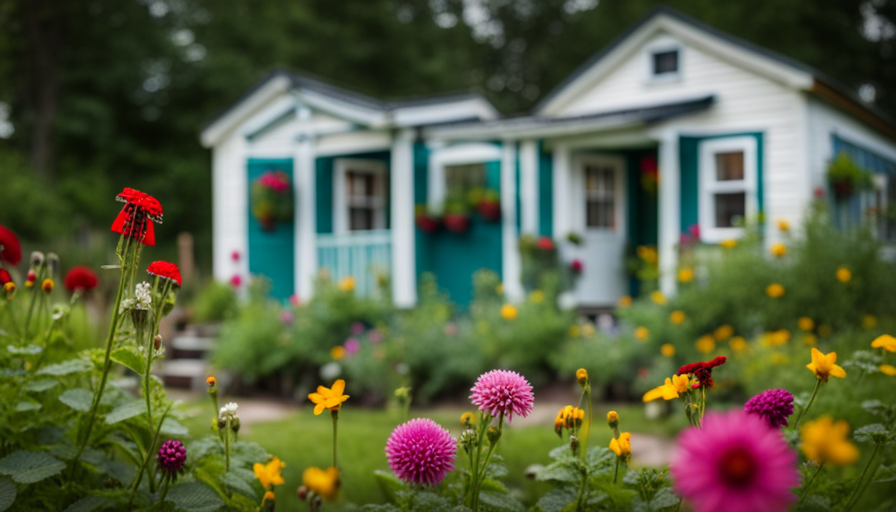
Envision a world where the constraints of conventional homeownership are left behind, and you discover liberty within the confines of a tiny house. These compact, eco-friendly homes present a streamlined way of living, enabling you to concentrate on the essentials in life. And what if it was possible to acquire a tiny house for free? That’s correct – a tiny house completely free of charge.
In this article, I will guide you through the journey of acquiring your very own free tiny house. From researching giveaway contests to exploring government programs and grants, there are numerous avenues to explore. You can even volunteer for tiny house building projects or join online communities that share your passion.
So, let’s dive in and discover the secrets to obtaining a free tiny house that will unlock a world of possibilities.
Key Takeaways
- Government programs and grants, such as Rural Housing Repair and HOME Investment Partnerships, can help individuals obtain affordable housing, including free tiny houses.
- Crowdfunding campaigns can be used to raise funds for a tiny house project.
- Volunteering for tiny house building projects, such as with Habitat for Humanity, can provide valuable experience and contribute to affordable housing options.
- Online communities and forums dedicated to tiny houses offer resources, tips, and support for building and living in a tiny house.
Research Tiny House Giveaway Contests
To increase your chances of acquiring a free tiny house, it’s advisable to research various tiny house giveaway contests. These contests are a great way to potentially win a fully furnished and ready-to-live-in tiny house. When researching these contests, be sure to look for ones that align with your preferences and needs.
Some contests may require specific criteria, such as submitting a design concept or sharing your story of why you deserve a tiny house. During your research, you may come across valuable resources and tips on tiny house design. Take advantage of these opportunities to learn about innovative space-saving solutions and creative storage ideas.
Additionally, it’s important to consider the pros and cons of living in a tiny house. While tiny houses offer financial freedom, minimalism, and a smaller carbon footprint, they also come with challenges such as limited space and potential zoning restrictions.
Once you have gathered information on tiny house giveaway contests and familiarized yourself with tiny house design tips and the pros and cons of living in a tiny house, it’s time to explore government programs and grants. These programs can provide financial assistance or resources to help you obtain a free or affordable tiny house.
Explore Government Programs and Grants
Did you know there are government programs and grants available for individuals looking to secure their own compact living space? When it comes to getting a free tiny house, exploring government funding options should not be overlooked. Many government agencies offer programs and grants specifically designed to help people build or obtain affordable housing, including tiny houses. These programs can provide financial assistance, technical support, and resources to help you navigate the process of building or acquiring a tiny house.
To give you an idea of the available options, here is a table showcasing some government programs and grants that can help you in your quest for a free tiny house:
| Program/Grant Name | Agency/Organization | Description |
|---|---|---|
| Rural Housing Repair | USDA | Provides grants to low-income individuals for home repairs. |
| HOME Investment Partnerships | HUD | Offers grants to eligible organizations for affordable housing projects. |
| Self-Help Homeownership | USDA | Assists low-income individuals in building their own homes. |
In addition to government funding, another option to explore is crowdfunding campaigns. Many individuals have successfully raised funds for their tiny houses through online platforms. These campaigns allow people to contribute small amounts of money towards your project, making it possible to finance your tiny house without relying solely on government assistance.
Now, let’s transition into the next section and look at tiny house exchange programs.
Look for Tiny House Exchange Programs
One option worth considering is exploring tiny house exchange programs to find affordable and unique living arrangements. These programs allow individuals to rent or exchange their tiny homes with others, giving you the opportunity to experience living in different locations without the burden of purchasing a house outright.
Tiny house rental options can be found through various online platforms and communities dedicated to promoting sustainable living and alternative housing options. This is a great way to test out the tiny house lifestyle before committing to building or buying your own.
In addition to rental options, some tiny house exchange programs also offer financing alternatives. These programs can help you secure a tiny house loan or provide assistance in finding funding options that fit your budget. By participating in these programs, you can not only find a place to live but also gain access to resources and support networks that can help you navigate the world of tiny house living.
As you explore tiny house exchange programs and rental options, you may also come across opportunities to volunteer for tiny house building projects. This can be a valuable experience for those interested in learning more about construction and design, while also giving back to the tiny house community. By getting involved in these projects, you can contribute your skills and time towards creating affordable housing options for others.
Volunteer for Tiny House Building Projects
You can contribute your time and skills to volunteer for building projects in the tiny house community, where individuals create affordable housing options for others, fostering a sense of community and shared resources. One way to get involved is by participating in tiny house building workshops. These workshops provide hands-on experience and guidance from experts in the field. Not only will you learn valuable construction skills, but you will also have the opportunity to connect with like-minded individuals who share your passion for tiny houses.
Another option is to volunteer for Habitat for Humanity projects that focus on constructing tiny houses. Habitat for Humanity is a well-known organization dedicated to providing affordable housing for those in need. By volunteering with them, you can directly contribute to the construction of tiny houses and make a positive impact on someone’s life.
To give you a deeper insight into the benefits of volunteering for tiny house building projects, here is a comparison table:
| Tiny House Building Workshops | Habitat for Humanity Projects |
|---|---|
| Learn construction skills | Help provide housing options |
| Connect with like-minded individuals | Make a direct impact on someone’s life |
| Hands-on experience | Join a well-known organization |
By volunteering for these projects, you not only gain valuable knowledge and skills, but you also become part of a larger community that is committed to creating affordable housing solutions. After exploring the world of tiny house building projects, it’s time to transition into the next section about joining online tiny house communities and forums.
Join Online Tiny House Communities and Forums
Immerse yourself in the world of tiny houses by joining online communities and forums where like-minded individuals share their experiences and expertise. Online networking is an invaluable resource when it comes to building and living in a tiny house.
These communities provide a platform for you to connect with others who have already gone through the process, allowing you to learn from their successes and challenges. Finding resources is another major benefit of joining these online communities. Members often share tips and tricks for sourcing materials, finding affordable land, and navigating legal regulations. You can also discover innovative design ideas and creative storage solutions that you may not have considered before.
In addition to the wealth of knowledge, online communities and forums offer a sense of camaraderie and support. It’s reassuring to know that there are others out there who share your passion for tiny houses and are willing to offer guidance along the way.
By joining these online platforms, you can gain valuable insights into the tiny house movement and connect with individuals who can help you achieve your goal of living in a tiny house. Consider house sitting or property caretaking opportunities as another avenue towards your dream.
Consider House Sitting or Property Caretaking Opportunities
By exploring house sitting or property caretaking opportunities, individuals can experience the joy of living in a cozy, low-maintenance space while taking care of someone else’s cherished home. House sitting involves temporarily living in a vacant house and looking after it while the owners are away. Property caretaking, on the other hand, may involve staying in a small cottage or cabin on a property and taking care of general maintenance tasks. Both options provide a unique opportunity to live in a tiny house without the financial commitment.
To find house sitting or property caretaking opportunities, there are various online platforms and websites dedicated to connecting homeowners with responsible individuals. These platforms allow you to create a profile, specify your preferences, and browse through available listings. It’s important to carefully read the listings and communicate with the homeowners to ensure a good fit for both parties.
House sitting and property caretaking can be a win-win situation. Homeowners have peace of mind knowing that their property is being cared for, while individuals get to enjoy the benefits of living in a tiny house without the cost. These experiences also offer a chance to explore different locations and lifestyles, making them ideal for those who crave adventure and flexibility.
As you consider house sitting or property caretaking, it’s worth exploring other alternative housing options that can further enhance your quest for a free tiny house.
Explore Alternative Housing Options
Take a moment to explore other unique housing options that can add excitement and diversity to your search for a cozy, low-maintenance dwelling. Did you know that according to a recent study, there’s been a 66% increase in the number of people opting for alternative housing solutions in the past decade?
One popular alternative housing option is the tiny house. These small, compact dwellings aren’t only environmentally friendly, but they also offer a chance to live a simpler, more minimalist lifestyle. Tiny house design trends have evolved over the years, making these homes both functional and aesthetically pleasing. From clever storage solutions to innovative space-saving designs, there are endless possibilities for customizing your tiny house to fit your needs.
Additionally, living in a tiny house has numerous advantages. They’re not only more affordable than traditional homes, but they also require less maintenance, allowing you to spend more time pursuing your passions and less time on household chores. If you’re interested in exploring alternative housing options, consider the advantages of living in a tiny house.
The next step is to connect with local nonprofit organizations that specialize in providing affordable housing solutions.
Connect with Local Nonprofit Organizations
If you’re looking to explore alternative housing options, connecting with local nonprofit organizations can be a great way to get a free tiny house. These organizations often have partnerships with local businesses and individuals who are willing to donate or sponsor tiny houses for those in need.
By reaching out to these organizations, you can tap into their network and resources to find opportunities for free or heavily discounted tiny houses. One of the ways these partnerships work is through fundraising events. Nonprofit organizations often organize events such as auctions, galas, or community gatherings to raise funds for their causes.
Attending these events not only supports the organization but also gives you a chance to meet potential sponsors or donors who might be interested in providing a tiny house. Additionally, these events can be a great way to learn more about the tiny house community and connect with like-minded individuals.
To help you visualize the possibilities, here are three examples of how local partnerships and fundraising events can lead to a free tiny house:
-
Local construction companies team up with nonprofit organizations to build and donate tiny houses to individuals in need.
-
Community members come together to organize a charity auction, with the proceeds going towards funding a tiny house for someone who can’t afford one.
-
Local businesses sponsor tiny house building workshops, where participants have the opportunity to win a fully constructed tiny house.
By connecting with local nonprofit organizations and attending fundraising events, you can increase your chances of finding a free tiny house. But that’s not the only way! In the next section, we’ll explore how you can utilize social media and online marketplaces to further your search for a free tiny house.
Utilize Social Media and Online Marketplaces
Harness the power of social media and online marketplaces to uncover incredible opportunities in your quest for a cozy, affordable living space. When it comes to tiny house construction and financing, there are plenty of resources available online that can help you find the perfect tiny house for free or at a low cost.
Social media platforms like Facebook and Instagram have groups and pages dedicated to tiny house enthusiasts. Joining these communities can connect you with people who are looking to give away or sell their tiny houses at a discounted price. Additionally, online marketplaces such as Craigslist and Tiny House Listings allow you to browse through a variety of tiny houses for sale or even trade.
When searching online, be sure to use specific keywords like ‘free tiny house’ or ‘affordable tiny house’ to narrow down your options. You can also reach out to local tiny house builders and ask if they have any discounted or giveaway opportunities available.
By utilizing social media and online marketplaces, you can find unique and affordable tiny house options that fit your needs and budget. Don’t forget to get creative with DIY tiny house building and repurposing, as we will explore in the next section.
So, let’s dive into the world of DIY tiny house construction and repurposing to further enhance your chances of getting a free tiny house.
Get Creative with DIY Tiny House Building and Repurposing
Embrace your creativity and explore the world of DIY construction and repurposing to transform ordinary materials into your dream living space, proving that building a cozy, affordable home doesn’t have to be limited to traditional methods. When it comes to decorating your tiny house, the possibilities are endless. Whether you prefer a minimalist, rustic, or eclectic style, there are plenty of ideas to make the most of your limited space.
To help you get started, here are some tiny house decoration ideas:
| Decorating Ideas | Description | Benefits |
|---|---|---|
| Vertical storage solutions | Utilize vertical space by installing shelves or hanging organizers. | Maximizes storage space and keeps your tiny house organized. |
| Multi-functional furniture | Choose furniture pieces that serve multiple purposes, such as a sofa with built-in storage or a desk that transforms into a dining table. | Saves space and maximizes functionality. |
| Natural light and mirrors | Use large windows and strategically placed mirrors to create the illusion of a bigger space and let more natural light in. | Makes your tiny house feel bright and airy. |
When it comes to financing your tiny house project, there are several options to consider. You can explore personal loans, RV loans, or even crowdfunding platforms specifically designed for alternative housing projects. Additionally, some tiny house builders offer financing options or rent-to-own programs.
Remember, building a tiny house is not only about saving money but also about expressing your creativity and personal style. So, get inspired, think outside the box, and turn your tiny house into a cozy and unique home that reflects your personality.
Frequently Asked Questions
Are there any restrictions on who can participate in tiny house giveaway contests?
Participation restrictions and eligibility criteria can vary for each tiny house giveaway contest. Some contests may have age restrictions, requiring participants to be at least 18 years old.
Others may have residency restrictions, limiting participation to certain regions or countries.
Additionally, some contests may require participants to meet specific income or financial criteria.
It’s important to carefully review the rules and regulations of each contest to determine if you’re eligible to participate.
How can I find out if I qualify for government programs and grants for tiny house ownership?
To find out if you qualify for government programs and grants for tiny house ownership, start by researching the specific requirements set by these programs.
Look for information on government websites, local housing authorities, or contact relevant organizations for guidance.
Some factors that may determine eligibility include income level, location, and housing needs.
It’s important to thoroughly review the qualifications to ensure you meet the criteria before applying for any grants or government assistance for your tiny house.
What are the requirements to participate in a tiny house exchange program?
To participate in a tiny house exchange program, there are certain requirements and eligibility restrictions.
While you may think it’s difficult to meet these criteria, it’s actually quite feasible. The participating requirements typically include having a stable income, a good credit score, and a willingness to maintain the property. Additionally, some programs may have restrictions based on location or age.
By meeting these criteria, you can take advantage of the benefits and opportunities offered by a tiny house exchange program.
How can I ensure the safety and legality of volunteering for tiny house building projects?
To ensure the safety and legality of volunteering for tiny house building projects, it’s important to take certain precautions.
First, conduct background checks on all participants to ensure a safe environment.
Additionally, have volunteers and the organization sign liability waivers to protect everyone involved.
These measures help ensure that everyone is qualified and protected, creating a secure and legal environment for volunteering in tiny house building projects.
What are some alternative housing options to consider besides tiny houses?
Living in a world where housing costs are soaring, considering alternative options can be a breath of fresh air.
Container homes, for instance, provide an eco-friendly and affordable solution. These homes, made from recycled shipping containers, can be customized to suit your needs.
Another option is co-housing communities, where individuals share common spaces and resources, creating a sense of community and reducing costs.
Exploring these alternatives can open up a world of affordable and sustainable housing opportunities.
Conclusion
In conclusion, getting a free tiny house is not an impossible dream. By researching giveaway contests, exploring government programs and grants, participating in exchange programs, and volunteering for building projects, you can increase your chances of finding a free tiny house.
Additionally, utilizing social media, online marketplaces, and getting creative with DIY projects can also be helpful. Remember, where there’s a will, there’s a way, so don’t give up on your dream of owning a tiny house. As the saying goes, "Where there’s a door, there’s a home."
Hi, I’m Emma. I’m the Editor in Chief of Tiny House 43, a blog all about tiny houses. While tree houses are often associated with childhood, they can be the perfect adult retreat. They offer a cozy space to relax and unwind, surrounded by nature. And since they’re typically built on stilts or raised platforms, they offer stunning views that traditional homes simply can’t match. If you’re looking for a unique and romantic getaway, a tree house tiny house might just be the perfect option.
Beginners Guides
How Can I Build My Tiny House With No Land
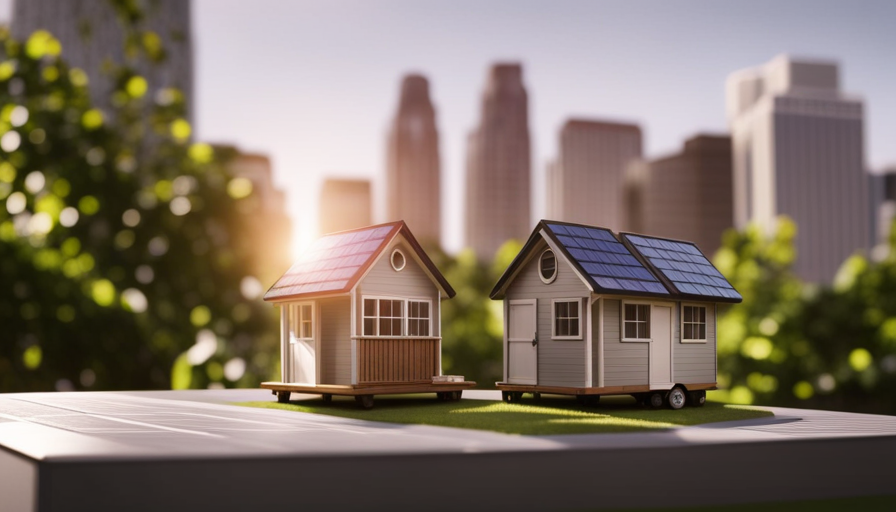
Constructing a small home is a dream shared by many, yet what happens when you lack the land for its foundation? This challenge might appear daunting, however, there’s no need to worry! By leveraging ingenuity and resourcefulness, achieving your dream of a tiny home is still possible. In this article, I aim to impart the wisdom and insights I’ve gathered on crafting a tiny home without the ownership of land.
Now, you might be wondering how this is even possible. How can you have a tiny house without a plot of land to place it on? Well, that’s where the magic of alternative living arrangements comes in. From portable and mobile designs to utilizing temporary land options and converting existing structures, there are plenty of ways to make it work.
But it doesn’t stop there. I will also delve into the world of tiny house villages and communities, where like-minded individuals come together to create a unique living experience. Additionally, I’ll explore the options of working with tiny house builders or contractors and seeking out financing and funding opportunities.
Whether you’re looking to live off the grid or simply embrace a minimalist lifestyle, this article will provide you with the detailed information you need to build your tiny house without land.
So, let’s get started and turn your tiny house dreams into a reality!
Key Takeaways
- Building a tiny house without land can be achieved by opting for portable or mobile designs that can be easily transported.
- Renting or leasing opportunities on someone else’s land, joining a tiny house community, or exploring co-housing projects can provide support and a place to park the tiny house.
- Converting existing structures such as shipping containers, barns, garages, or sheds can be a viable option for creating a tiny house, considering factors like size, condition, location, and legal suitability.
- Researching local tiny house legislation, financing options, zoning laws, and regulations is crucial before embarking on building a tiny house without land.
Choose a Portable or Mobile Tiny House Design
If you’re looking to build your tiny house without the need for land, you’ll want to consider opting for a portable or mobile design that allows you the freedom to take your home wherever you please!
There are various portable tiny house options available that cater to different needs and preferences. One popular choice is a trailer-based design, where your tiny house is built on a trailer bed, allowing for easy transportation. This option gives you the flexibility to move your home to different locations, whether it’s for a change of scenery or to follow job opportunities.
The benefits of mobile tiny homes are numerous. Firstly, they provide a sense of adventure and freedom as you can constantly change your surroundings. Secondly, you don’t have to worry about purchasing land, paying property taxes, or dealing with zoning regulations. Additionally, if you ever decide to relocate, you can simply hitch your tiny house to a vehicle and hit the road.
Now, once you have your portable or mobile tiny house design in mind, the next step is to find alternative living arrangements that suit your lifestyle and preferences.
Find Alternative Living Arrangements
When it comes to finding alternative living arrangements for my tiny house, I’ve found that there are a few key options worth exploring.
First, I can look for renting or leasing opportunities where I can park my tiny house on someone else’s land. This allows me to enjoy the benefits of a tiny house without the commitment of owning land.
Another option is to join a tiny house community or co-housing project, where like-minded individuals come together to create a supportive and sustainable living environment. This not only provides a sense of community but also access to shared resources and amenities.
Look for Renting or Leasing Opportunities
Explore the vast expanse of rental and leasing options like a curious explorer, as you search for a place to plant the seed of your tiny house dream.
When it comes to renting options, consider looking for properties that allow for tiny house living. Some landlords may be open to the idea, especially if you can showcase the benefits of tiny house living, such as reduced environmental impact and lower utility costs.
Additionally, land leasing is another avenue to explore. Look for landowners who are willing to lease a portion of their property for you to park your tiny house on. This can provide you with the freedom and flexibility to build your tiny house without the need for purchasing land.
With these options in mind, you can take the next step and join a tiny house community or co-housing project.
Join a Tiny House Community or Co-Housing Project
Immerse yourself in the vibrant and supportive community of like-minded individuals by joining a tiny house community or co-housing project. This is a fantastic way to not only build your tiny house but also to establish lasting connections and learn from others who’ve already gone through the process.
When you join a tiny house community, you gain access to a wealth of knowledge and resources. You can attend workshops and seminars on building techniques, sustainable living, and off-grid solutions. Additionally, co-housing projects often offer shared facilities and land, reducing the financial burden and providing a sense of security.
By joining a tiny house community or co-housing project, you can tap into the collective wisdom and support of others who share your passion for minimalism and sustainable living.
Transitioning into the subsequent section about ‘utilize temporary land options’, you can explore various options for finding land to park your tiny house temporarily.
Utilize Temporary Land Options
By utilizing temporary land options, you can transform your dream of building a tiny house into a reality, no matter where you are. Temporary land options provide you with the opportunity to live in your tiny house while also exploring creative housing solutions. These options allow you to experience the benefits of tiny house living without the long-term commitment of owning land.
One option is to rent land from a private landowner or a tiny house community. This allows you to set up your tiny house on someone else’s property, giving you a temporary place to call home. Another option is to look for land-sharing programs, where you can exchange your skills or services in exchange for a place to park your tiny house. This not only provides you with a place to live but also allows you to connect with like-minded individuals who share your passion for tiny house living.
To help you visualize these temporary land options, here is a table showcasing some examples:
| Temporary Land Option | Description |
|---|---|
| Renting from a Private Landowner | Renting a spot on someone else’s property for a specific period of time. |
| Tiny House Communities | Joining a community that provides designated space for tiny houses. |
| Land-sharing Programs | Exchanging skills or services for a temporary place to park your tiny house. |
By exploring these temporary land options, you can start building your tiny house and begin living the lifestyle you’ve always dreamed of. In the next section, we will discuss how you can convert existing structures into a suitable home for your tiny house.
Convert Existing Structures
One exciting option is to repurpose existing structures to create a cozy home for your tiny house. By converting existing structures, you can save time and money while also making use of available resources.
There are various types of structures that can be repurposed, such as shipping containers, barns, garages, or even old sheds. When converting an existing structure, it’s important to consider its size, condition, and location in order to ensure it meets your needs and complies with local regulations.
Firstly, assess the structure’s size and layout to determine how it can be modified to accommodate your tiny house. You may need to remove walls, add windows or doors, or reconfigure the interior to optimize space. Additionally, consider the condition of the structure and any necessary repairs or upgrades that may be needed. This could include reinforcing the foundation, improving insulation, or updating electrical and plumbing systems.
Another important factor to consider is the location of the existing structure. It’s essential to ensure that the structure is situated on land where you have permission to build or use it as a dwelling. Utilize temporary land options such as renting or leasing land from someone who’s willing to accommodate your tiny house project.
By converting existing structures, you can create a unique and personalized tiny house while also minimizing the environmental impact of new construction. In the next section, we’ll explore the option of considering tiny house villages or communities as a way to further enhance your tiny house living experience.
Consider Tiny House Villages or Communities
When considering building a tiny house without land, one option to explore is researching existing tiny house villages or communities. These communities often have established infrastructure and resources in place, making it easier to navigate the legal and logistical aspects of living in a tiny house.
Another possibility is collaborating with others to start a tiny house community from scratch. This can be a rewarding experience as you work together to create a supportive and sustainable living environment for everyone involved.
Research Existing Tiny House Villages or Communities
If you’re looking to build your tiny house with no land, have you considered researching existing tiny house villages or communities? These unique communities have been growing in popularity, with over 200 tiny house villages or communities currently established across the United States alone.
When researching existing tiny house villages or communities, it’s important to explore the local tiny house legislation to ensure that it aligns with your needs and preferences. Additionally, you can look into the various tiny house financing options available to determine the best approach for your project.
By thoroughly researching existing tiny house villages or communities, you can gain valuable insights and ideas for your own tiny house journey. Transitioning into the next section, collaborating with others to start a tiny house community can provide even more support and resources for building your dream home.
Collaborate with Others to Start a Tiny House Community
Collaborating with others to start a tiny house community can provide an incredible network of support and resources for realizing your dream home. Through collaborative initiatives and community development, you can work together with like-minded individuals to create a thriving and sustainable tiny house community.
Here are three ways collaborating with others can benefit you in building your tiny house with no land:
-
Shared resources: By pooling your resources with others, you can collectively purchase materials, tools, and services at a lower cost, making your tiny house construction more affordable.
-
Knowledge exchange: Collaborating with others allows you to tap into a wealth of knowledge and experience. You can learn from each other’s successes and challenges, gaining valuable insights and avoiding common pitfalls.
-
Emotional support: Building a tiny house can be a daunting task, but with a community of like-minded individuals, you’ll have a support system to lean on. You can share ideas, seek advice, and celebrate milestones together.
By collaborating with others, you can lay the foundation for a successful tiny house community. Now, let’s explore tiny house-friendly areas to further enhance your journey.
Explore Tiny House-Friendly Areas
When it comes to exploring tiny house-friendly areas, one of the key points to consider is researching zoning laws and regulations. This is crucial in order to ensure that you can legally park and live in your tiny house.
It is important to find areas that have supportive policies or existing tiny house communities, as these locations are more likely to be open to the idea of tiny house living and may have specific regulations in place to accommodate it.
Research Zoning Laws and Regulations
Researching zoning laws and regulations is essential when building a tiny house with no land, as it allows you to understand the legal restrictions and requirements that may impact your project. Interestingly, a study conducted by the American Planning Association found that 57% of municipalities in the United States have regulations that restrict or prohibit tiny houses on wheels. It is crucial to become familiar with the local zoning laws before embarking on your tiny house journey. To visually represent the importance of researching regulations and finding suitable locations, consider the following table:
| Pros of Researching Zoning Laws and Regulations | Cons of Not Researching Zoning Laws and Regulations |
|---|---|
| Avoid legal issues and fines | Build in prohibited areas |
| Ensure compliance with safety standards | Encounter difficulties in obtaining utilities |
| Find suitable areas for your tiny house | Waste time and money on non-compliant locations |
| Secure necessary permits and approvals | Face potential eviction or relocation challenges |
By researching zoning laws and regulations, you can avoid unnecessary setbacks and ensure the success of your tiny house project. Moving forward, let’s explore how to look for areas with tiny house communities or supportive policies.
Look for Areas with Tiny House Communities or Supportive Policies
To increase your chances of finding a welcoming community for your tiny house, explore areas with existing tiny house communities or policies that support these unique housing options. Look for regions that have already embraced the tiny house movement and have established communities where like-minded individuals can live and thrive.
These areas may have specific zoning laws and regulations that cater to portable or permanent tiny houses, making it easier for you to find a place to park or locate your tiny home. Joining a tiny house community not only provides a sense of camaraderie and support, but also offers numerous benefits such as shared resources, reduced living expenses, and access to communal spaces.
By immersing yourself in an existing tiny house community, you can gain valuable insights and connections, making the process of building your own tiny home even more enjoyable and rewarding. When considering your options, it’s also important to utilize the expertise of tiny house builders or contractors to ensure your dream home becomes a reality.
Utilize Tiny House Builders or Contractors
Consider hiring experienced tiny house builders or contractors to help you create your dream home without the need for land. These professionals specialize in constructing portable tiny house options, which are perfect for individuals who want the freedom to move their home to different locations. By utilizing their expertise, you can ensure that your tiny house is built to the highest standards and meets all necessary regulations.
One of the main benefits of hiring contractors is that they have the knowledge and experience to guide you through the entire building process. They’ll help you design a layout that maximizes space and functionality, ensuring that every square inch of your tiny house is utilized efficiently. Additionally, they can assist with obtaining the necessary permits and navigating any zoning restrictions that may apply.
Furthermore, contractors often have established relationships with suppliers and can help you source high-quality materials at a reasonable cost. They know which products are best suited for tiny house construction and can recommend the most durable options.
Once your tiny house is complete, you can seek out financing and funding options to make your dream a reality. Whether it’s through loans, grants, or alternative financing methods, there are various ways to secure the necessary funds for your project.
Seek Out Financing and Funding Options
If you’re looking to turn your dream of living in a tiny house into a reality, it’s important to explore different financing and funding options.
There are several ways to finance your tiny house project, even if you don’t currently own land. One option is to seek out financing specifically designed for tiny homes. Some financial institutions offer loans or mortgages specifically tailored for tiny house construction. These loans typically have favorable terms and interest rates, making it easier for you to fund your project.
Another option is to explore crowdfunding opportunities. Crowdfunding platforms, such as Kickstarter or GoFundMe, allow you to create a campaign to raise funds for your tiny house. You can share your story, plans, and vision with potential donors who may be willing to contribute to your project. This can be a great way to gather support and financial backing from a wide network of people who believe in your dream.
By exploring different financing and funding options, you can find the resources you need to build your tiny house, even without owning land. Once you have secured the necessary funds, you can then move on to the next step: planning for off-grid living.
Plan for Off-Grid Living
Once you’ve secured financing and funding, it’s time to envision a self-sufficient lifestyle off the grid in your cozy, sustainable haven. Living off the grid means relying on your own resources for energy and water, and it requires careful planning and consideration. Here are three key elements to consider when planning for off-grid living:
-
Off-grid energy solutions: Generating your own electricity is crucial when living off the grid. Solar panels are a popular choice for tiny houses, providing clean and renewable energy. You can also explore wind turbines or hydroelectric systems depending on your location and resources. Investing in energy-efficient appliances and LED lighting will help maximize your energy usage.
-
Sustainable water sources: Access to clean water is essential for off-grid living. Consider installing rainwater collection systems to harvest water for daily use. Implementing water-saving fixtures and appliances, like low-flow toilets and showerheads, will help conserve water. Additionally, you may want to explore options for water filtration and purification to ensure a safe and reliable water supply.
-
Waste management: Living off the grid requires proper waste management. Composting toilets are an eco-friendly option that helps reduce water usage and produces nutrient-rich compost. Implementing a greywater system can also help recycle and reuse water from sinks and showers for irrigation purposes.
Transitioning into the subsequent section about embracing a minimalist lifestyle, it’s important to remember that off-grid living goes hand in hand with simplifying and minimizing our footprint on the environment.
Embrace a Minimalist Lifestyle
When it comes to planning for off-grid living, one of the key aspects to consider is embracing a minimalist lifestyle. Living with less has countless benefits, especially when it comes to building a tiny house with no land.
By embracing minimalism, you’ll be able to create a living space that’s not only functional but also aesthetically pleasing. With limited square footage, every item you choose to include in your tiny house becomes crucial. It forces you to prioritize and only keep the essentials, which ultimately leads to a clutter-free and organized living environment.
Living with less also means reducing your environmental footprint. By eliminating excess belongings, you consume less, produce less waste, and require fewer resources. This aligns perfectly with the off-grid lifestyle, where self-sufficiency and sustainability are key values.
Furthermore, minimalism promotes a sense of freedom and flexibility. It allows you to focus on experiences rather than material possessions. With fewer things to maintain and worry about, you can spend more time exploring nature, pursuing hobbies, and connecting with loved ones.
Embracing a minimalist lifestyle is essential when building a tiny house with no land. It not only helps you create a functional and aesthetically pleasing living space but also aligns with the values of off-grid living, such as sustainability and freedom. Living with less truly has its own unique set of benefits.
Frequently Asked Questions
What are some financing options for building a tiny house?
When it comes to financing options for building a tiny house, there are a few routes you can take.
One option is to rent land for your tiny house, avoiding the pesky burden of actually owning it. Renting allows you to focus on the construction process without the hassle of purchasing property.
Alternatively, you could consider buying land for your tiny house, providing a sense of stability and ownership. Both options have their pros and cons, so weigh them carefully before making a decision.
How can I find temporary land options for my tiny house?
Finding land for a tiny house can be challenging, but there are temporary land options available. One option is land sharing, where you collaborate with someone who has unused land and agree to share the space for a period of time.
Another option is land lease, where you rent a piece of land for your tiny house. Both options require thorough research and negotiation to ensure a suitable arrangement.
Online platforms and local community organizations can be helpful resources for finding these temporary land options.
Are there any specific areas that are more friendly towards tiny houses?
There are indeed specific areas that are more friendly towards tiny houses, such as tiny house communities. These communities are designed to accommodate tiny houses and often have zoning regulations in place that allow for their construction.
They provide a supportive and like-minded community where you can connect with others who share the same lifestyle. By joining a tiny house community, you can benefit from their knowledge and experience, making your tiny house journey even more enjoyable.
Can I convert an existing structure into a tiny house?
Converting an existing structure into a tiny house is a great way to save time and money. However, it’s important to be aware of zoning restrictions in your area. Make sure to check with local authorities to ensure that you can legally renovate the structure into a residential dwelling.
Additionally, consider the structural integrity of the building and any necessary modifications that need to be made to accommodate a tiny house design.
What are some off-grid living considerations for a tiny house?
When it comes to off-grid living in a tiny house, there are a few key considerations to keep in mind.
First and foremost, sustainable energy options are essential. Investing in solar panels or a wind turbine can provide you with reliable power.
Additionally, implementing water conservation techniques, such as rainwater harvesting and greywater systems, will help you minimize your water usage.
Living off-grid requires careful planning and resource management, but the rewards of self-sufficiency are well worth it.
Conclusion
In conclusion, building a tiny house with no land may seem like a daunting task, but with the right planning and resources, it can be a rewarding and fulfilling journey.
Remember the old saying, "Home is where the heart is." With determination and creativity, you can create a cozy and comfortable space that truly feels like home, regardless of where it’s located.
So don’t let the lack of land hold you back from pursuing your tiny house dreams. Embrace the adventure and enjoy the freedom of living simply and sustainably.
Hi, I’m Emma. I’m the Editor in Chief of Tiny House 43, a blog all about tiny houses. While tree houses are often associated with childhood, they can be the perfect adult retreat. They offer a cozy space to relax and unwind, surrounded by nature. And since they’re typically built on stilts or raised platforms, they offer stunning views that traditional homes simply can’t match. If you’re looking for a unique and romantic getaway, a tree house tiny house might just be the perfect option.
-

 Beginners Guides3 months ago
Beginners Guides3 months agoHow To Buy A Tesla Tiny House
-

 Energy Efficiency3 weeks ago
Energy Efficiency3 weeks agoBest Tiny Homes For Cold Climates
-

 Beginners Guides3 months ago
Beginners Guides3 months agoTiny House Nation Where Are They Now Stephanie
-

 Tiny House Resources (e.g., legalities, cost, insurance, FAQs)1 month ago
Tiny House Resources (e.g., legalities, cost, insurance, FAQs)1 month agoDo Tiny Homes Need Planning Permission?
-

 Beginners Guides3 months ago
Beginners Guides3 months agoFrom The Show Tiny House Nation How Many Keep Their Tiny House?
-

 Beginners Guides1 month ago
Beginners Guides1 month agoUsing a Climbing Net For Treehouse Construction
-

 Beginners Guides1 month ago
Beginners Guides1 month agoHow to Build a Treehouse Without Drilling Into the Tree
-
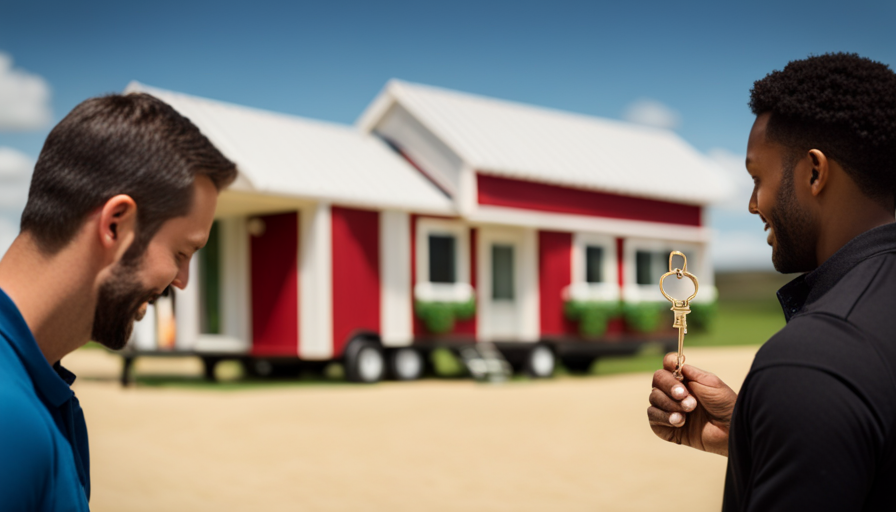
 Beginners Guides3 months ago
Beginners Guides3 months agoTiny House Nation Who Pays For The Houses






